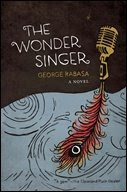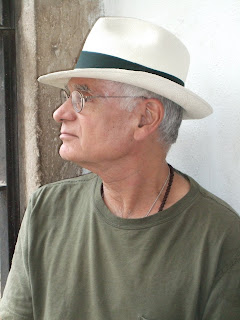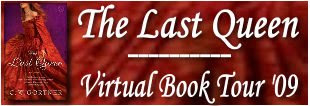
“She’d been disappearing for so long that she didn’t know how to stay.” (Page 9 of the uncorrected proof)
Lilia Albert is abducted by her father, and as they move around the United States in and out of hotels, her sense of home is vanquished. She no longer knows how to stop and settle into a “normal” life. As an adult she continues to move from place to place, carrying with her the only photograph from her past that she has–a Polaroid of her and a waitress. Lilia is a complex character, her emotions deep below the surface, and she meets a variety of people along the way–Eli, an art gallery salesman working on his thesis; Erica, a girl from Chicago with blue hair; and Michaela, an exotic dancer and part-time tightrope walker from Montreal.
“She came out all dressed in black, as she almost always did, and carrying the three pieces of plate that had fallen off the bed the night before; it was a light shade of blue, and sticky with pomegranate juice.” (Page 2 of the uncorrected proof)
Mandel peppers each chapter with just enough description and information to keep the pages turning, as readers strive to uncover the moment when Lilia’s life changed and why it changed. But this mystery is more than what happens to Lilia, it’s about how an obsession can rip apart a private investigator’s family, encourage an ex-lover to step outside his comfort zone, and the myriad ways in which humans react to disturbing events from the past.
“Lilia’s childhood memories took place mostly in parks and public libraries and motel rooms, and in a seemingly endless series of cars. Mirage: she used to see water in the desert. In the heat of the day it pooled on the highway, and the horizon broke into shards of white. There was a map folded on the dashboard, but it was fading steadily under the barrage of light; Lilia was supposed to be the navigator but entire states were dissolving into pinkish sepia, the lines of highways fading to gray. The names of certain cities were indistinct now along the fold, all the borders were vanishing.” (Page 7 of the uncorrected proof)
Readers will itch to reach the resolution of this abduction case, not only to discover why Lilia’s father took her from her mother and brother, but also to see Lilia recover many of her earlier memories settled behind the dust kicked up by her continuous travels. The one minor drawback could be the chapters featuring the private detective and his obsessive pursuit of Lilia and her father even when he no longer desires their capture; these chapters dispel some of the suspense built up in previous chapters. However, Eli, Michaela, and Lilia’s story lines twist and mingle throughout the novel, and Mandel does well shifting between points of view. Last Night in Montreal is not a typical mystery, but still satisfying.
Check out this video for her book.
If you missed Emily’s guest post on Savvy Verse & Wit about her writing space, please check it out, here.
Also Reviewed By:
Violet Crush
Bookfoolery and Babble
Care’s Online Book Club
Everyday I Write the Book
She Is Too Fond of Books
Musings of a Bookish Kitty













 I won
I won 










